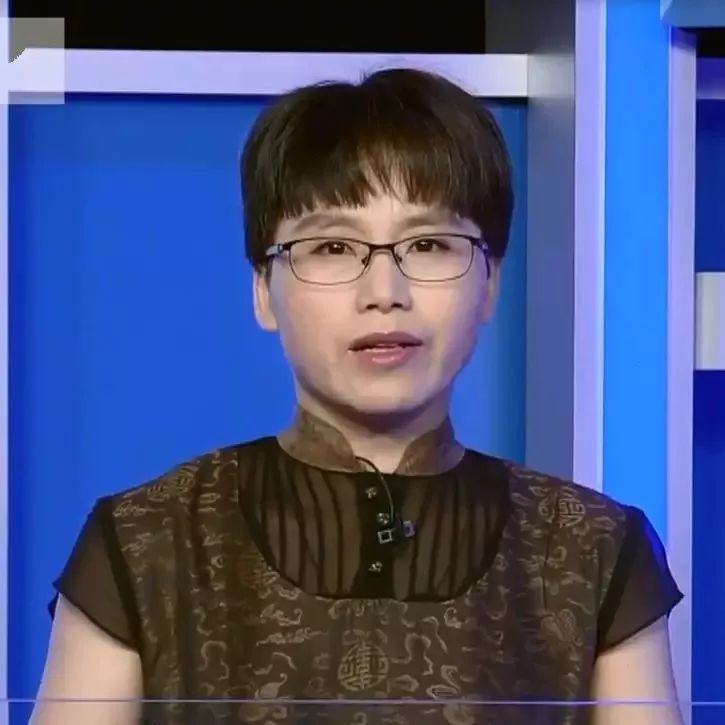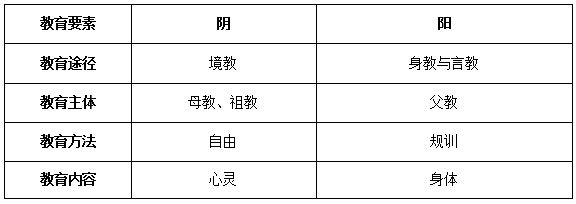
When it comes to nurturing children, parents certainly place great importance on it, but promoting a healthy and balanced development for children is not an easy task.
Eastern culture particularly emphasizes the balance of Yin and Yang (阴阳), and the various elements of family education embody the principles of Yin-Yang interaction and balance.
Consider this: what happens when there are rules but no love? What happens when there is love but no rules?

Today at the “Zhejiang Parent School,” Teacher Gan Jianmei (甘剑梅) from Zhejiang Normal University Hangzhou Preschool Normal College will utilize the theory of Yin-Yang balance from traditional Chinese culture to explore the path of Yin-Yang balance in family education, thereby grasping the middle way of family education and providing appropriate educational support for children.
 Pre-Class Preparation
Pre-Class Preparation
Before the lecture, it is essential to introduce today’s main speaker
↓↓↓

Gan Jianmei
PhD in Education, Associate Professor and Master’s Supervisor at Zhejiang Normal University, Director of the Social Education Branch of the Zhejiang Preschool Education Research Association. Her research focuses on moral education for children, social education for preschool children, and family and community education for preschool children. She has published academic works including “Analysis of Modern Issues in School Moral Life” and edited the Ministry of Education’s 12th Five-Year Plan textbook “Social Education for Preschool Children”.
 Pay Attention
Pay Attention
“The Path of Yin-Yang Balance in Family Education”
Speaker: Gan Jianmei, Zhejiang Normal University Hangzhou Preschool Normal College
For those without internet access, the editor has also summarized the key points of the lecture in text form, which parents must remember!
 What is Yin-Yang Balance?
What is Yin-Yang Balance?
Ancient Chinese philosophy tells us that Yin and Yang arise from the movements of the sun and moon in the universe, and the movement of Yin and Yang is the law governing all things.

The Taiji Diagram (太极图) is a microcosm of the theory of Yin-Yang balance.
· Everything that is sunny, outgoing, bright, ascending, warm, and in perpetual motion belongs to Yang (阳).
· Everything that is shaded, introspective, dim, descending, cold, and relatively static belongs to Yin (阴).
All things exist in a state of mutual rooting, mutual restriction, and transformation between Yin and Yang. The theory of Yin-Yang balance can be used to understand and guide the operation of all things.
 Yin and Yang in Family Education Elements
Yin and Yang in Family Education Elements
The elements of family education mainly include: educational subjects, educational pathways, educational methods, and educational content. Each element has its Yin and Yang extremes.
The following is a relative classification of these elements.
↓↓↓

1. Family education pathways mainly include environmental education, behavioral education, and verbal education. This means educating through the environment in a subtle manner; educating through demonstration of behavior; and educating through verbal communication. Among these, the subtle environmental education is often invisible and implicit, categorized as the Yin aspect of the pathway. In contrast, behavioral education and verbal communication are visible and can be consciously observed and grasped, categorized as the Yang aspect of the pathway.
2. The subjects of family education mainly include fathers, mothers, and grandparents. Fatherly education is often expansive, outgoing, and active, categorized as the Yang aspect of the educational subject. In contrast, motherly education and grandparental education are often nurturing and introspective, categorized as the Yin aspect of the educational subject.
3. Family education methods mainly discuss freedom and discipline. Freedom refers to providing children with time, space, and opportunities for independent exploration; while discipline mainly involves rules and training guidance. From a conscious perspective, the method of freedom is implicit and flexible, categorized as the Yin aspect of the method, while rules are explicit and rigid, categorized as the Yang aspect of the method.
4. Family education content can be presented from different angles, here mainly from the perspective of physical and spiritual development. Attention and nourishment for physical development are visible, categorized as the Yang aspect of the content, while spiritual development is invisible, categorized as the Yin aspect of the content.

 Balance of Environmental, Behavioral, and Verbal Education
Balance of Environmental, Behavioral, and Verbal Education
Be cautious: neglecting environmental and behavioral education while relying too heavily on simplistic verbal education.
Additionally, parents should be wary of behaviors that are detrimental to children’s growth: coarse language; irritable temper; disharmony in marital relationships; bad habits; and negative preferences.
Key to balance: environmental education as the foundation, behavioral education as the key, and verbal education as the support.
The focus of environmental education as the foundation is to create a good family communication and cultural atmosphere; the focus of behavioral education as the key is to lead by example; and the focus of verbal education as the support is to ensure that verbal communication is warm, concise, and clear.

 Balance of Motherly, Fatherly, and Grandparental Education
Balance of Motherly, Fatherly, and Grandparental Education
Be cautious: excessive involvement of grandparents in child-rearing, leading to a lack of fatherly or motherly education.
Both situations have their drawbacks; grandparental education can lead to overindulgence, while the absence of fatherly education can weaken gender identity.
Key to balance: motherly and fatherly education are core, while grandparental education is supportive.
Among these three educational subjects, motherly and fatherly education are core. For early childhood, mothers bear more nurturing and educational responsibilities, while fathers should not neglect their educational responsibilities. They can support mothers or participate in their children’s education as much as possible to shape their character. Grandparents mainly assist parents with some living or caregiving responsibilities, playing a supportive role, and should not dominate the educational responsibilities of their grandchildren, as this is not conducive to establishing healthy parent-child relationships.

 Balance of Freedom and Discipline
Balance of Freedom and Discipline
Be cautious: excessive freedom while neglecting necessary discipline, or overly strict discipline lacking freedom.
Excessive freedom refers to unprincipled indulgence of children, while overly strict discipline often manifests as constant restrictions on children’s behavior. The lack of freedom for exploration can affect children’s sensory, imagination, and creativity development; the lack of discipline can impact children’s safety and social cooperation.
The key to balance is: allowing children to explore freely without compromising safety and the rights of others, while providing necessary rule guidance based on the situation.
Freedom of exploration must be established in a safe environment that does not infringe on the rights of others. Therefore, parents should create a safe environment for children to explore freely, allowing them ample opportunities for self-discovery. However, without discipline, children cannot develop a good sense of boundaries and rules, which can affect their safety and social cooperation. Thus, parents have the responsibility to teach children the rules and boundaries they should follow in different life situations, what is permissible, and what is not, which aids in their social adaptation. Rule guidance should begin with establishing family rules, such as respect for elders and politeness towards family members.

 Balance of Physical and Spiritual Nourishment
Balance of Physical and Spiritual Nourishment
Be cautious: focusing only on the visible physical aspects while neglecting the invisible spiritual aspects.
Because the body is the material foundation of the spirit, and the spirit is the spiritual nourishment of the body.
Key to balance:
1. Nourish children’s bodies with regular routines, exercise, and appropriate nutrition.
Establishing a regular routine for children is crucial for their health. For young children, their routines should ideally align with the natural rhythms of sunrise and sunset, allowing their lives to receive strong nourishment from nature. They should not follow adults in staying up late. Additionally, appropriate nutrition and exercise are essential. Children’s diets should adhere to the principles of low sugar, low salt, low oil, and low protein; high fiber, fresh, simple, seasonal, local, and organic foods, providing sufficient time and space for exercise without excessive restrictions for safety.
2. Nourish children’s spirits with appropriate emotions, stories, and good deeds.
Children’s spirits need nourishment from emotions, stories, and good deeds. Therefore, parents should pay attention to children’s emotions and feelings, not just their behavioral outcomes, and tell them various good stories that nourish the spirit (various fairy tales and traditional folk stories have profound spiritual meanings that can greatly nourish children’s spirits). Parents’ kindness and good deeds are also valuable resources for nourishing young children’s spirits, as kindness and good deeds represent a warm spiritual force that is essential for children’s healthy growth.
 Post-Class Summary
Post-Class Summary
Dear parents, the division of Yin and Yang discussed in this article is relative; from different angles and levels, the extremes of Yin and Yang can also interchange. This is one of the characteristics of the Yin-Yang balance theory, where Yin and Yang are not fixed extremes. What is Yin here may be Yang elsewhere.
The balance of family education is a complex art, and may parents become artists of education through their observations of their children and their own growth!


Previous Reviews
Lecture 1: “How Should Parents Discuss Exam Results with Children”
Lecture 2: “Cultivating Children’s Safety Awareness and Self-Protection Skills”
Lecture 3: “Accepting Children’s Different Growth Paces”
Lecture 4: “More Important than the Starting Line is the Direction”
Lecture 5: “What Should Parents Do in the Face of the Hot Trend of Elementary School Math Olympiad”
Lecture 6: “Explaining the New College Entrance Examination in One Sentence”
Lecture 7: “How to Choose Toys”
Lecture 8: “Respecting Children’s Procrastination”
Lecture 9: “How to Help Children Alleviate Exam Anxiety”
Lecture 10: “Self-Management of Parents’ Emotions”
Lecture 11: “Is It Necessary to Set Rules for Young Children?”
Lecture 12: “Effective Paths to Guide Children into Deep Reading”
Lecture 13: “Family Dietary Preparation for Children During Exams”
Lecture 14: “The Focus That Influences Children’s Lives”
Lecture 15: “How to Help Children Choose Suitable University Majors”
Lecture 16: “Praise and Criticism Should Not Be Just Words”
Lecture 17: “Exams are Also a Psychological Battle”
Lecture 18: “Making Organization a Habit”
Lecture 19: “What Summaries and Reflections Can Parents Assist with After Children’s Exams?”
Lecture 20: “Is Your Child Really Lying?”
Lecture 21: “Family Emotional Management During Children’s Exams”
Lecture 22: “Career Planning and Volunteer Applications”
Lecture 23: “Consistency in Family Education: ‘Playing the Good Cop and Bad Cop'”
Lecture 24: “Family Comfort After Exam Setbacks”
Lecture 25: “How to Make Travel an Effective Learning Pathway”
Lecture 26: “What to Do When Children Love QQ and WeChat Moments?”
Lecture 27: “What Should Parents Do When Conflicts Arise Between Children?”
Lecture 28: “The Benefits of Children Learning Household Chores”
Lecture 29: “Family Equality in ‘Admitting Mistakes'”
Lecture 30: “Why is My Child So Procrastinating?”
Lecture 31: “What Should Parents Do When Their Children Want to Meet Online Friends?”
Lecture 32: “Loving Children Starts with Exercising Together”
Lecture 33: “Recognizing and Responding to Children’s Emotional Signals”
Lecture 34: “Interpersonal Relationships During Adolescence”
Lecture 35: “Do Not Be a Carrier of ‘Negative Energy'”
Lecture 36: “Love Should Not Be a Substitute: Discussing the Cultivation of Children’s Self-Care Abilities”
Lecture 37: “Parents, Please Put Down Your Phones”
Lecture 38: “What Should Parents Do When Their Children Make ‘Bad Friends’?”
Lecture 39: “From Having Nothing to Talk About to Talking About Everything”
Lecture 40: “Correctly Viewing Winning and Losing on the ‘Starting Line’ of Life”
Lecture 41: “Accompanying Children in Reading”
Lecture 42: “Setting Reasonable Learning Expectations Together with Children”
Lecture 43: “Respecting Children’s Right to Privacy”
Lecture 44: “Early Adaptation to Kindergarten”
Lecture 45: “What to Do When Children Have Dating Phenomena with the Opposite Sex”
Lecture 46: “Are You Ready for the Transition from Preschool to Primary School?”
Lecture 47: “How to Handle the Transition from Primary to Secondary School”
Lecture 48: “Career Planning Starting from Financial Literacy Education”
Lecture 49: “Do Not Set Overly Abstract Learning Requirements for Children”
Lecture 50: “Please Do Not Disturb, I Am Working! – Cultivating Children’s Focus”
Lecture 51: “First Habit, Then Academics – Essential Life Habits for Primary School Students”
Lecture 52: “My Child’s Circle of Friends Does Not Include Me”
Lecture 53: “There is Knowledge in Children’s Peer Interactions”
Lecture 54: “What to Do When Parental Authority is Challenged”
Lecture 55: “Do Not Always Compare Your Child with Others”
Lecture 56: “Can Children Read ‘Leisure Books’?”
Lecture 57: “Correctly Understanding Children’s Play”
Lecture 58: “Can Your Child Eat Independently?”
Lecture 59: “Establishing a Unique Family Culture”
Lecture 60: “Children’s Drawings Have Secrets – Interpretation and Evaluation of Children’s Art”
Lecture 61: “Cultivating Resilience and an Optimistic Mindset”
Lecture 62: “How to Address Imbalances Between Children’s Subjects”
Lecture 63: “The Love and Rules of Family Education”
Lecture 64: “How to Guide Children to Use the Internet for Learning”

Video Production: Zhejiang Education Technology Center
Current Issue Editor: Yu Qin

